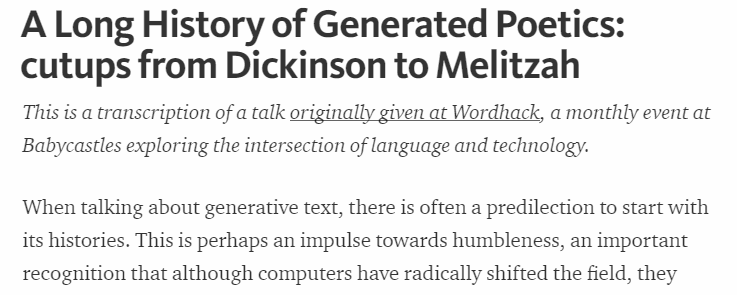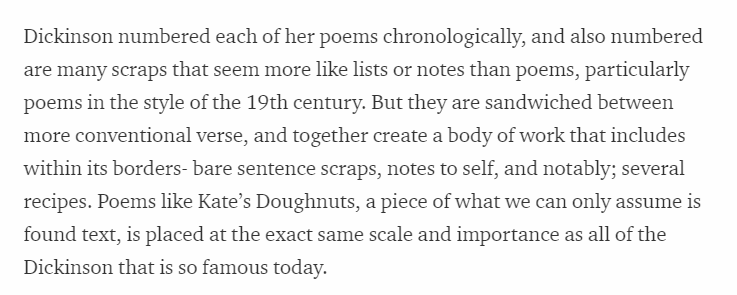

A Long History of Generated Poetics
When we talk about the history of generative text, we often talk about cut-ups. But while Dada frequently gets referenced in connection with it, it’s only one small link in the chain. In this talk, everest pipkin takes a look at the prehistory of fragmented generative text.
The talk goes over Emily Dickinson’s use of scraps of paper for transcribing poetry; the 12th century Japanese Honkadori; the literary structure of pre-imperial Chinese court argument; and Melitzah, a medieval Hebrew literary device that reused fragments to create new meaning.
Drawing a parallel between the reuse and generative works dependance on their corpus, everest pipkin goes on to explore how the structure of the source text creates the generative voice, and how that plays into our role as creators and readers:
So often when I talk about my work to writers unfamiliar with generative techniques, they joke that they will soon be out of a job. It is in jest, but it happens so often I can’t help but feel it comes from a place of genuine panic. I try to explain; sure, my tools can reproduce the right structures but they don’t really ‘get it’, meaningful output or not. Any moment of delight or clarity is on my end- the creative act here is in the reader.
When I say that the creative act is the reader’s, I imply the creator as well as the audience. When working with generative text, it is impossible not to read. One has to look for bodies of text that can function as useful sources for tools; big enough, or concrete enough, or with the right type of repetitive structure; learnable. And then one has to read the output of such machines, refining rules and structures to fix anything that breaks that aura of the space one is looking for. In this, we are not unlike the medieval scholar who studies holy verse to become fluent enough in that space that it becomes building block.
To ask if a machine could really understand the Torah, or for that matter- the importance of an Emily Dickinson recipe or a cutup newspaper poem or Wikipedia or emoji is not a question for now. That is, at this time, still our job; our machines stay tools like any other. What we are learning is what carries through, what we can teach our machines, and what lends them strength. The delight is all ours.
This gets at so much of what I’ve been trying to say here, over the past year and a half. I encourage you to go read the whole thing: https://medium.com/@everestpipkin/a-long-history-of-generated-poetics-cutups-from-dickinson-to-melitzah-fce498083233
